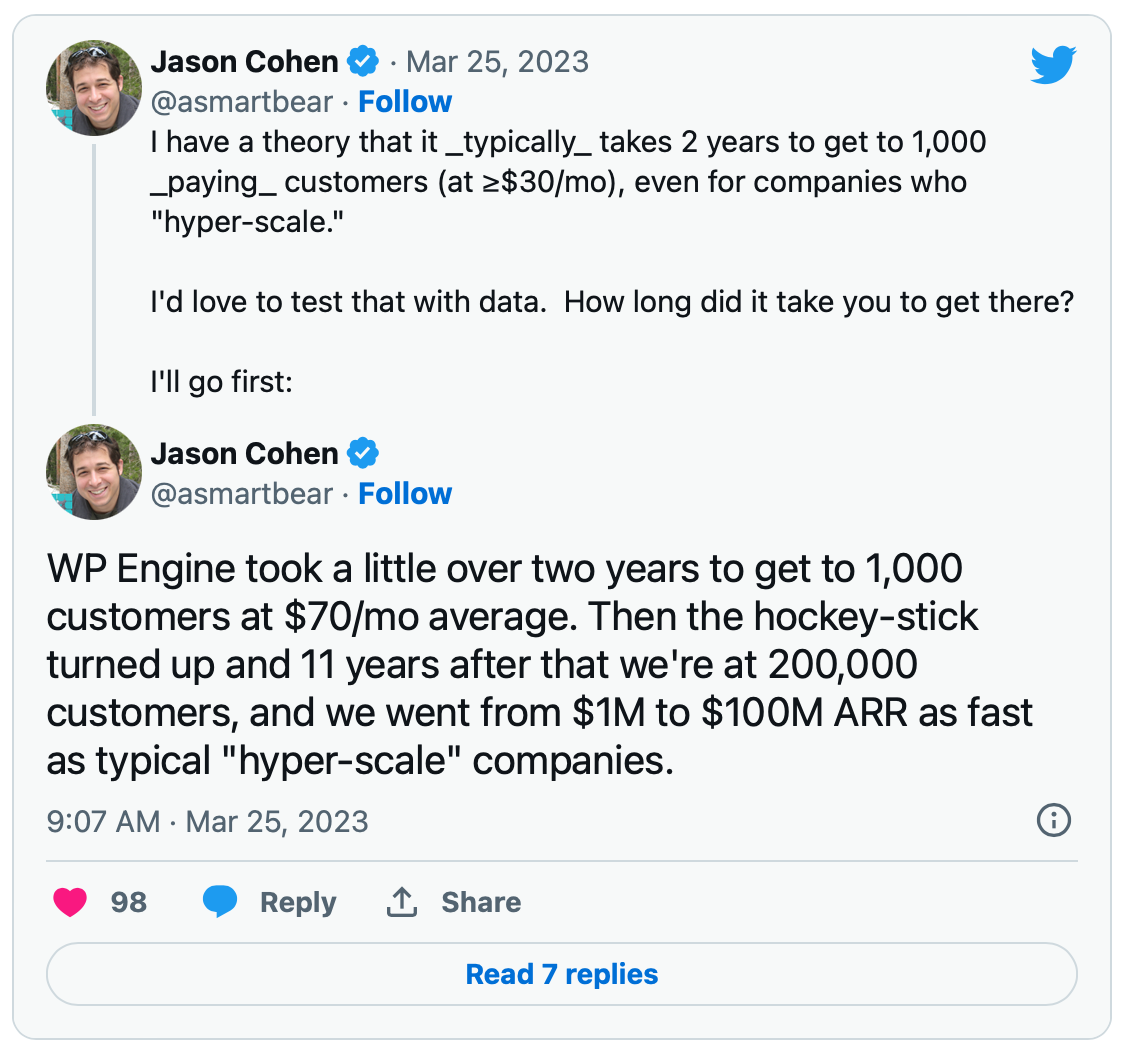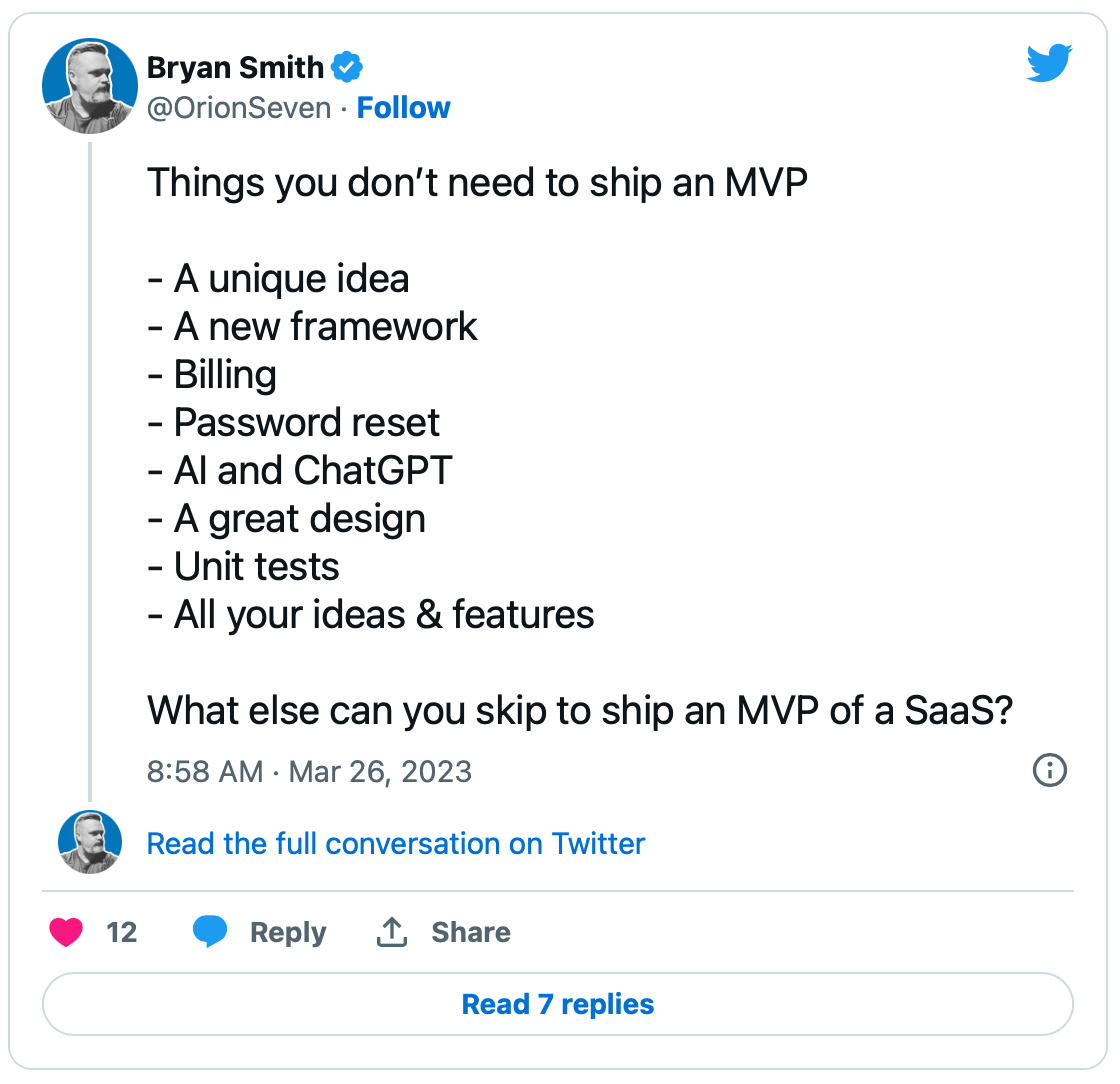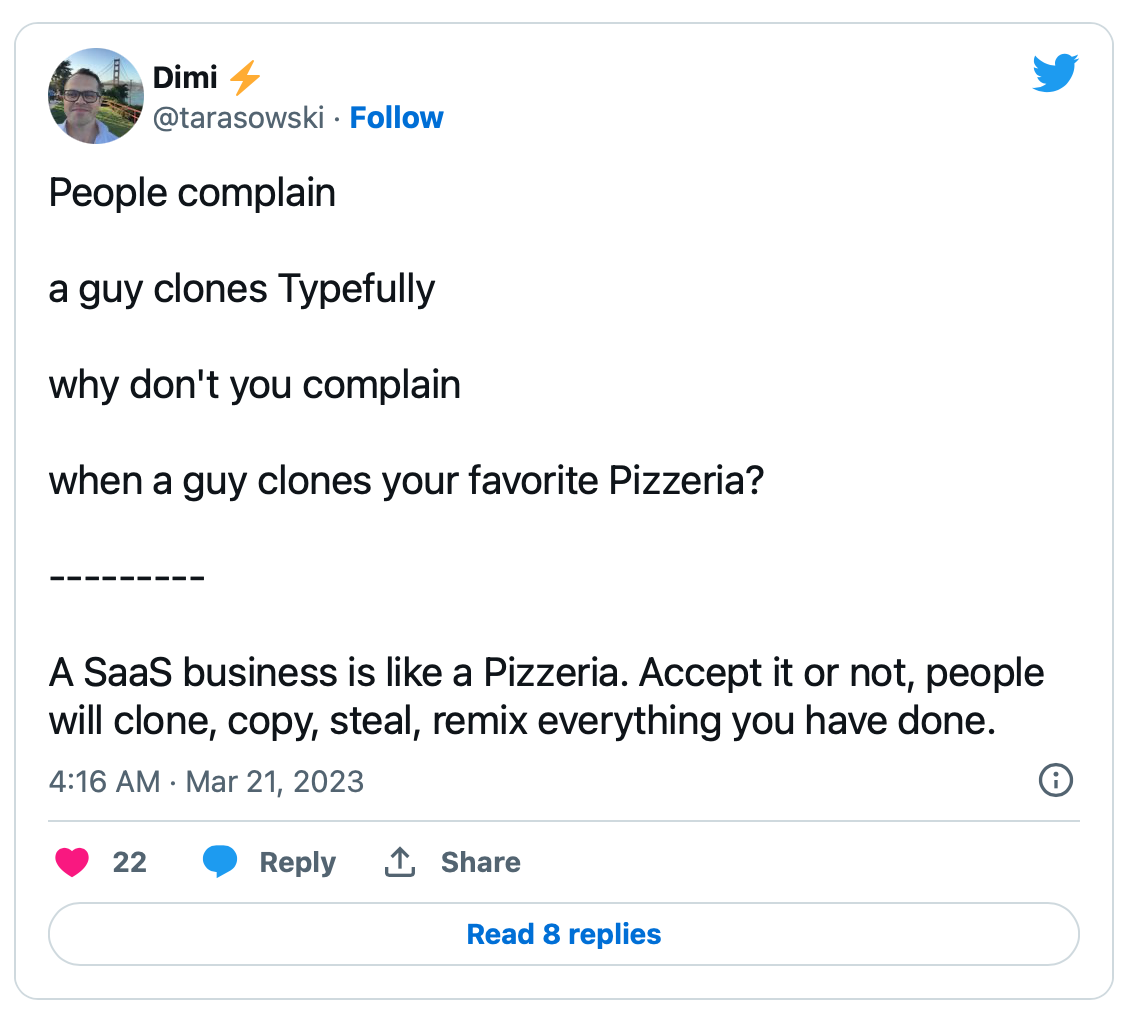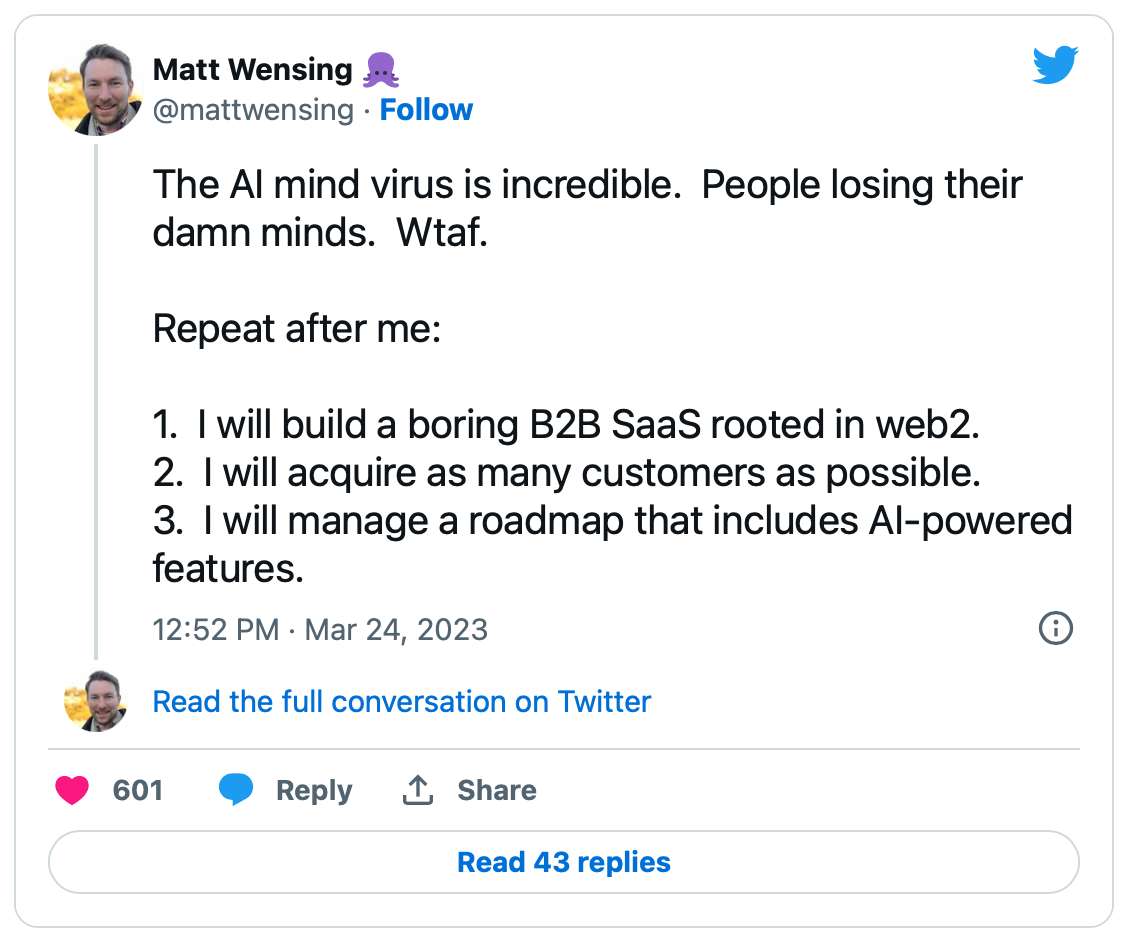Issue No. 12
You don't need that to ship a MVP
Most MVPs include way more than you need to validate your idea. So stop wasting your resources and ship less in your MVP.
Reading Time: 5 min

Source: DALLE, told to extract key phrases from this newsletter, create a prompt and using the style illustrative, colorful, futuristic create an image.
This week’s topic is your MVP doesn’t need everything you think it needs.
What you’ll learn this week:
- Is two years a magic number for SaaS growth?
- All the things people often think an MVP needs but don’t
- The essentials an MVP does need
Enjoy!
🔹 This week’s insight 👉 Is two years a magic SaaS milestone?
In the SaaS world, there are some key milestones for growth everyone talks about.
- Becoming ramen profitable (aka you make enough to feed yourself each month)
- Hitting various MRR & ARR milestones (popular ones $1k/mo and $100k/year)
But the number of customers (or logos in the B2B) world is less talked about.
This thread by Jason Cohen of WP Engine is a fascinating read because it highlights another milestone. When can you expect rapid growth?

Many factors contribute to rapid growth (aka hockey stick growth), but a significant factor is having enough customers talking about you. For Jason, it took 24 months to get to 1k B2B customers. The thread has many others voicing in and anecdotally sharing similar timeframes.
Is 24 months the average time it takes? We’ll see because, in the thread, Jason will be teaming up with others to do a more extensive survey. I can’t wait.
🔹 You don’t need that to ship an MVP
This weekend I tweeted a list of things you don’t need to include in an MVP.

I put this out there because, as I’ve mentioned, as entrepreneurs, we often set the bar too high for what’s needed to prove there is a business.
So, let’s dig in and discuss what you don’t need (before we talk about what you do need).
🔸 You don’t need a unique idea & all the features you can imagine
One of the first mistakes many potential founders make is thinking their startup has to have a hyper-unique idea. The truth is, there are copies of businesses everywhere.

It’s actually a good thing to copy an idea.
Because creating a new market is extremely hard, and the first-mover advantage often doesn’t pan out.
- Your idea won’t be an identical copy anyhow. It’ll be yours, with your take.
- And while we’re talking about ideas, since your goal with an MVP is to test the market and determine how it responds, you do not need all the features you’ve already come up with. Figure out the core, ship it, and nothing more.
🔸 Ship the core concept of your MVP, skip all the small stuff you can add when it’s needed
An MVP only needs a few things for the market to tell if they want more.
Your MVP does not need any of the following to prove there’s a market for it:
- Password reset — do it manually and wait till too big of a support pain.
- Or even passwords — you could use a Magic Links approach.
- Billing — if you start with a free trial, you’ve bought yourself a few weeks before you need to charge a credit card.
- A great design — if the idea is cool, then a lousy design will work for an MVP, but it’s easy to ship a good design by default with things like Tailwind UI.
- Unit Tests — once you have some free or paid users, add them.
- A fancy logo or favicon — Use your name as a logo.
You get the point. A lot of the stuff an MVP needs is only stuff an established and growing product needs.
Remember, the goal of your MVP is to learn what the market wants and for you to figure out how to connect to them. Once it’s shipped, keep iterating.
🔸 You don’t need the latest craze (AI and ChatGPT) or the latest tech
I’m not saying don’t use AI or ChatGPT. I’m just saying don’t suffer from FOMO by not using AI in your SaaS.
As I’ve said before, be strategic in how you use AI, and best yet, apply AI to augment users in your SaaS that isn’t AI-focused. It’s focused on some other market pain you’ve seen.

If you have an idea about AI, that’s great, but plenty of great ideas don’t require AI as the core feature. Use it, but use it sensibly (and you probably don’t need it in your MVP!
This same concept goes for using the latest framework in [pick your dev stack of choice].
Join the ProductFoundry Newsletter
Signup for insights into making great SaaS products and companies.